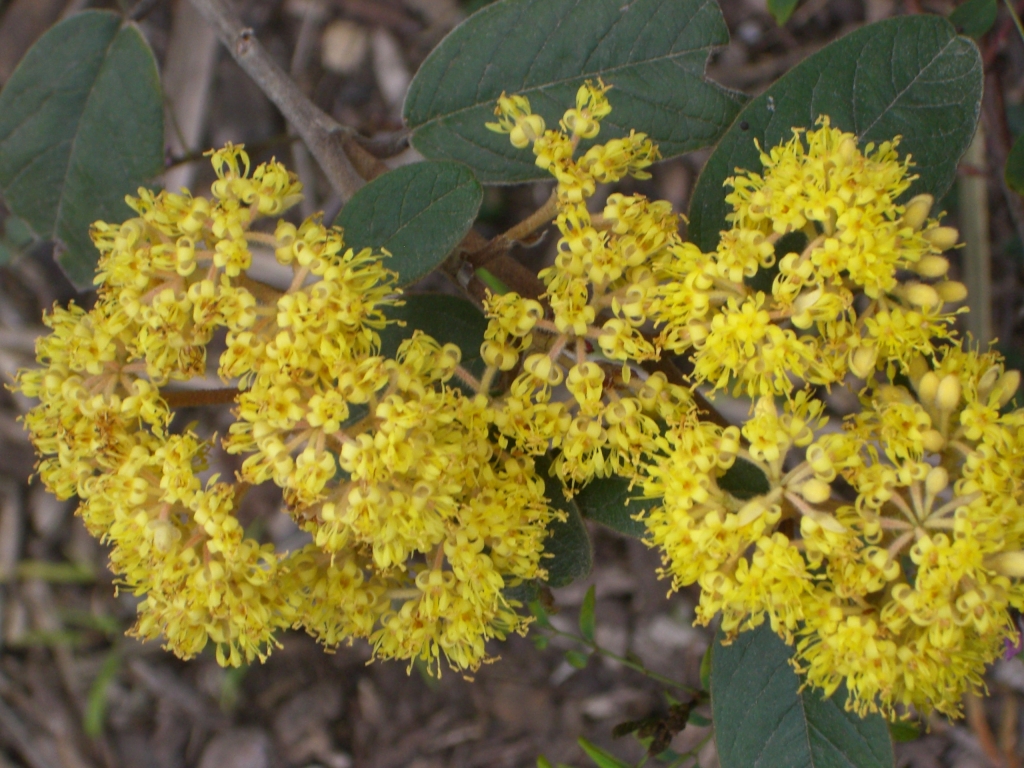Pomaderris lanigera
(Andrews) SimsShrub 0.5–3 m high; branchlets moderately to densely villous with rusty simple hairs obscuring fine stellate hairs. Leaves ovate or elliptic, 40–130 mm long, 20–50 mm wide, acute or obtuse, margins plane, upper surface with sparse to mid-dense, erect simple hairs, lower surface villous with spreading rusty simple hairs over short stellate hairs, secondary (and sometimes tertiary) veins apparent; stipules 4–6 mm long, deciduous. Panicles c. hemispherical, 4–12 cm diam., bracts deciduous. Flowers yellow, externally pale- to rusty-villous; pedicels 2.5–5.5 mm long; hypanthium 1–1.5 mm long; sepals 2–3 mm long, deciduous; petals spathulate, 1.5–2.5 mm long; disc absent; ovary inferior, summit villous, style branched in upper half. Operculum membranous, c. half mericarp length. Flowers Aug.–Oct.
GipP, OtP, EGL, EGU, HSF, HNF, HFE, VAlp. Also Qld, NSW. Moderately common in drier lowland forests in the east of the State, with outlying westerly occurrences at e.g. Kangaroo Ground, Beenak East, French Island, and in the north-east (Mt Buffalo foothills, Corryong area).
Close to P. aurea, but having coarser, longer adaxial indumentum, and the simple hairs on branchlets and abaxial leaf surface surface being curved and of more or less equal length.
A variable species, with a number of more or less distinct local forms. Plants in the western part of the range tend to have more densely indumented leaves that are rustier beneath. A variant from near-coastal heaths near Marlo and eastward is low-growing (to c. 1 m high), semi-lignotuberous, and has short and rather sparse simple hairs on leaf upper surfaces.
Walsh, N.G. (1999). Pomaderris. In: Walsh, N.G.; Entwisle, T.J., Flora of Victoria Vol. 4, Cornaceae to Asteraceae, pp. 85–109. Inkata Press, Melbourne.
 Spinning
Spinning


